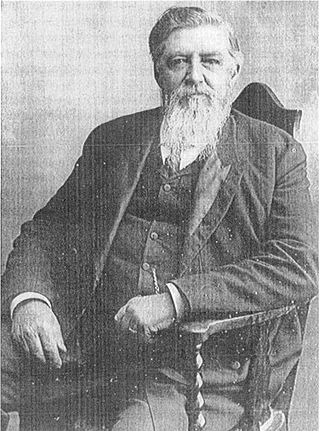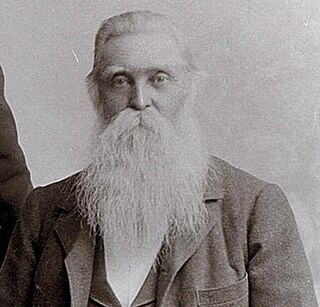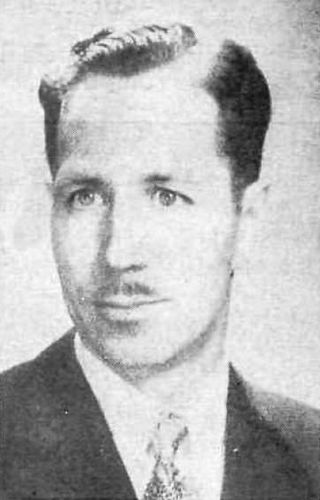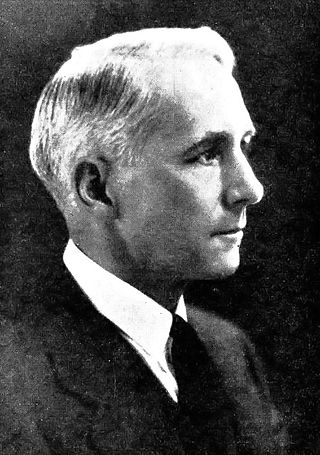In the Latter Day Saint movement, an evangelist is an ordained office of the ministry. In some denominations of the movement, an evangelist is referred to as a patriarch. However, the latter term was deprecated by the Community of Christ after the church began ordaining women to the priesthood. Other denominations, such as The Church of Jesus Christ (Bickertonite), have an evangelist position independent of the original "patriarch" office instituted movement founder Joseph Smith.
In the Latter Day Saint movement, priesthood is the power and authority of God given to man, including the authority to perform ordinances and to act as a leader in the church. A group of priesthood holders is referred to as a quorum.
In the Latter Day Saint movement, the President of the Church is generally considered to be the highest office of the church. It was the office held by Joseph Smith, founder of the movement, and the office assumed by many of Smith's claimed successors, such as Brigham Young, Joseph Smith III, Sidney Rigdon, and James Strang. Several other titles have been associated with this office, including First Elder of the church, Presiding High Priest, President of the High Priesthood, Trustee-in-Trust for the church, Prophet, Seer, Revelator, and Translator. Joseph Smith was known by all of these titles in his lifetime.
In the Latter Day Saint movement, a patriarchal blessing or evangelist blessing is administered by the laying on of hands, with accompanying words of counsel, reassurance and lifelong guidance intended solely for those receiving the blessing. The words are spoken by an ordained patriarch (evangelist) of the church, but are believed to be inspired by the Holy Ghost,. These blessings are given in both the Church of Jesus Christ of Latter-day Saints and the Community of Christ. The patriarchal/evangelist blessings are modeled after the blessing given by Jacob to each of his sons prior to his death.
The patriarchal priesthood is associated with the patriarchal order found in Mormonism and is especially connected with celestial marriage.

Hyrum Smith was an American religious leader in the Church of Jesus Christ of Latter Day Saints, the original church of the Latter Day Saint movement. He was the older brother of the movement's founder, Joseph Smith, and was killed with his brother at Carthage Jail where they were being held awaiting trial.

Joseph Smith Sr. was the father of Joseph Smith Jr., the founder of the Latter Day Saint movement. Joseph Sr. was also one of the Eight Witnesses of the Book of Mormon, which Mormons believe was translated by Smith Jr. from golden plates. In 1833, Smith Sr. was named the first patriarch of the Church of Christ. Joseph Sr. was also a member of the First Presidency of the church.
In the Latter Day Saint movement, patriarch is an office of the priesthood. It is considered to be either an office of the patriarchal priesthood or the Melchizedek priesthood.
Lineal succession was a doctrine of the Latter Day Saint movement, whereby certain key church positions were held by right of lineal inheritance. Though lineal succession is now largely abandoned, the offices connected with the practice were the President of the Church and the Presiding Patriarch.

Alexander Hale Smith was the third surviving son of Joseph Smith and Emma Hale Smith. Smith was born in Far West, Missouri, and was named after Alexander Doniphan, who had refused an order to execute Joseph Smith, and then was Joseph's defense attorney during Joseph's incarceration at Liberty Jail. Alexander Smith became a senior leader of the Reorganized Church of Jesus Christ of Latter Day Saints. Smith served as an apostle and as Presiding Patriarch of the church. He became religiously inclined after the April 1862 death of his older brother Frederick G. W. Smith, who had not been baptized, and was baptized on May 25, 1862, in Nauvoo, Illinois, by another older brother, Joseph Smith III.
The succession crisis in the Latter Day Saint movement occurred after the murder of Joseph Smith, the movement's founder, on June 27, 1844.

John Smith, was the fifth Presiding Patriarch of the Church of Jesus Christ of Latter-day Saints. His father was Hyrum Smith, the older brother of Joseph Smith, the founder of Mormonism. Having served for 56 years, he was the longest serving Presiding Patriarch in the history of the LDS Church. Smith traveled west to Winter Quarters and then Salt Lake City with the Mormon pioneers. He traveled with Heber C. Kimball's party and his step-mother Mary Fielding Smith. Smith joined the "Battalion of Life Guards" to protect the Latter-day Saints from Native Americans.

Eldred Gee Smith was the patriarch to the church of the Church of Jesus Christ of Latter-day Saints from 1947 to 1979. From 1979 to his death he was the patriarch emeritus of the church. He was the oldest and longest-serving general authority in the history of the church, although he had not been active in that capacity from 1979 to his death.

Joseph Fielding Smith was patriarch to the church and a general authority of the Church of Jesus Christ of Latter-day Saints from 1942 until 1946.

Hyrum Gibbs Smith was Presiding Patriarch of the Church of Jesus Christ of Latter-day Saints from 1912 until his death.
Assistant President of the Church was a position in the leadership hierarchy in the early days of the Latter Day Saint church founded by Joseph Smith. The Assistant President was the second-highest authority in the church and was a member of the church's governing First Presidency. As President of the Church, Smith appointed two men to serve in the position of Assistant President. After Smith's death, most Latter Day Saint denominations discontinued the position of Assistant President of the Church.

Elbert Aoriul Smith was an American leader in the Reorganized Church of Jesus Christ of Latter Day Saints. He was a member of the church's First Presidency from 1909 to 1938 and the Presiding Patriarch of the church from 1938 to 1958.
Originally, the office of Presiding Patriarch was one of the highest and most important offices of the church's priesthood. When a Presiding Patriarch has existed, the church has sustained the person as a prophet, seer, and revelator. In the history of the LDS Church, there have been eight Presiding Patriarchs, three Acting Presiding Patriarchs, and one Patriarch Emeritus.

The following outline is provided as an overview of and topical guide to the life and influence of Joseph Smith:
























